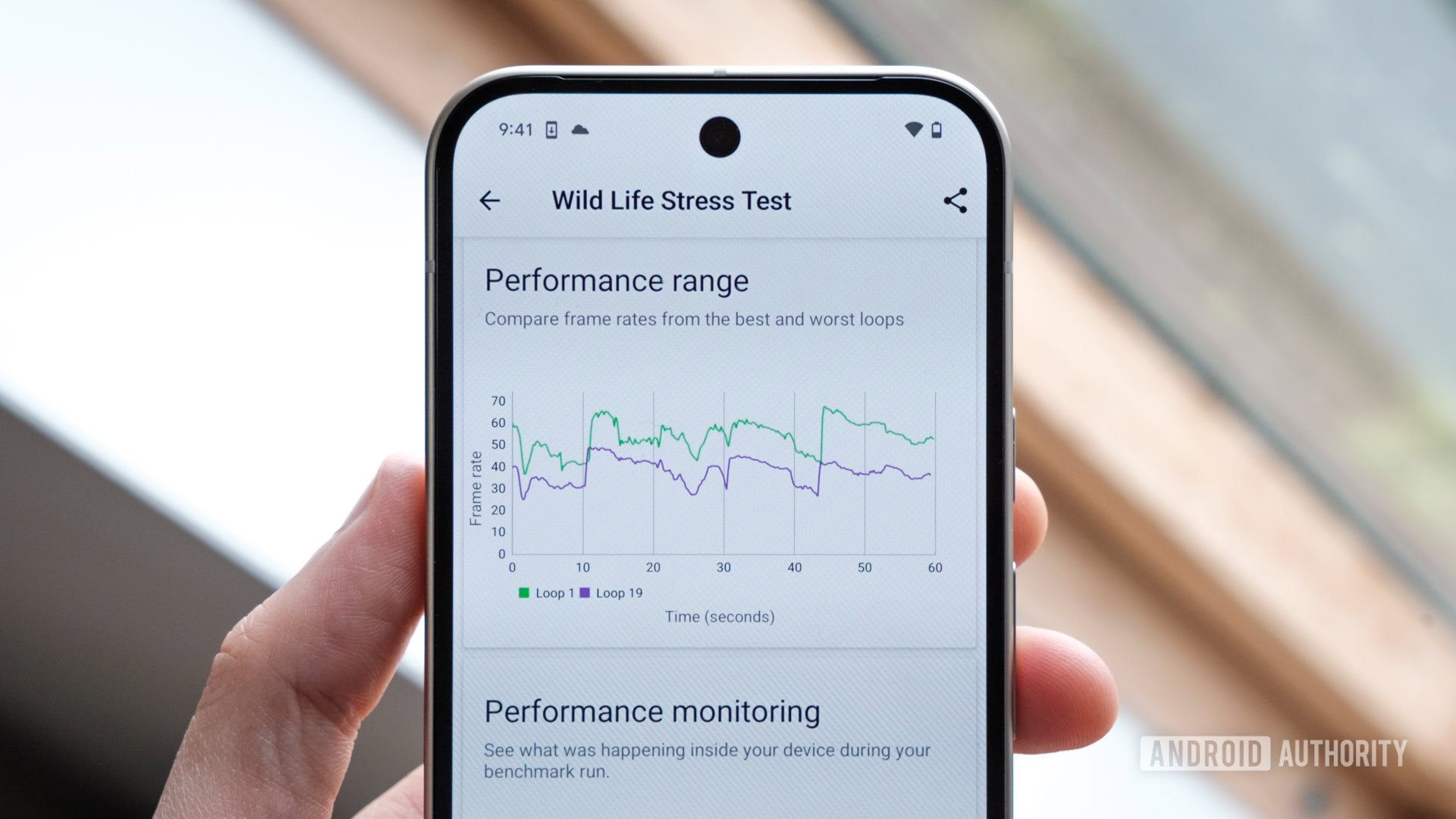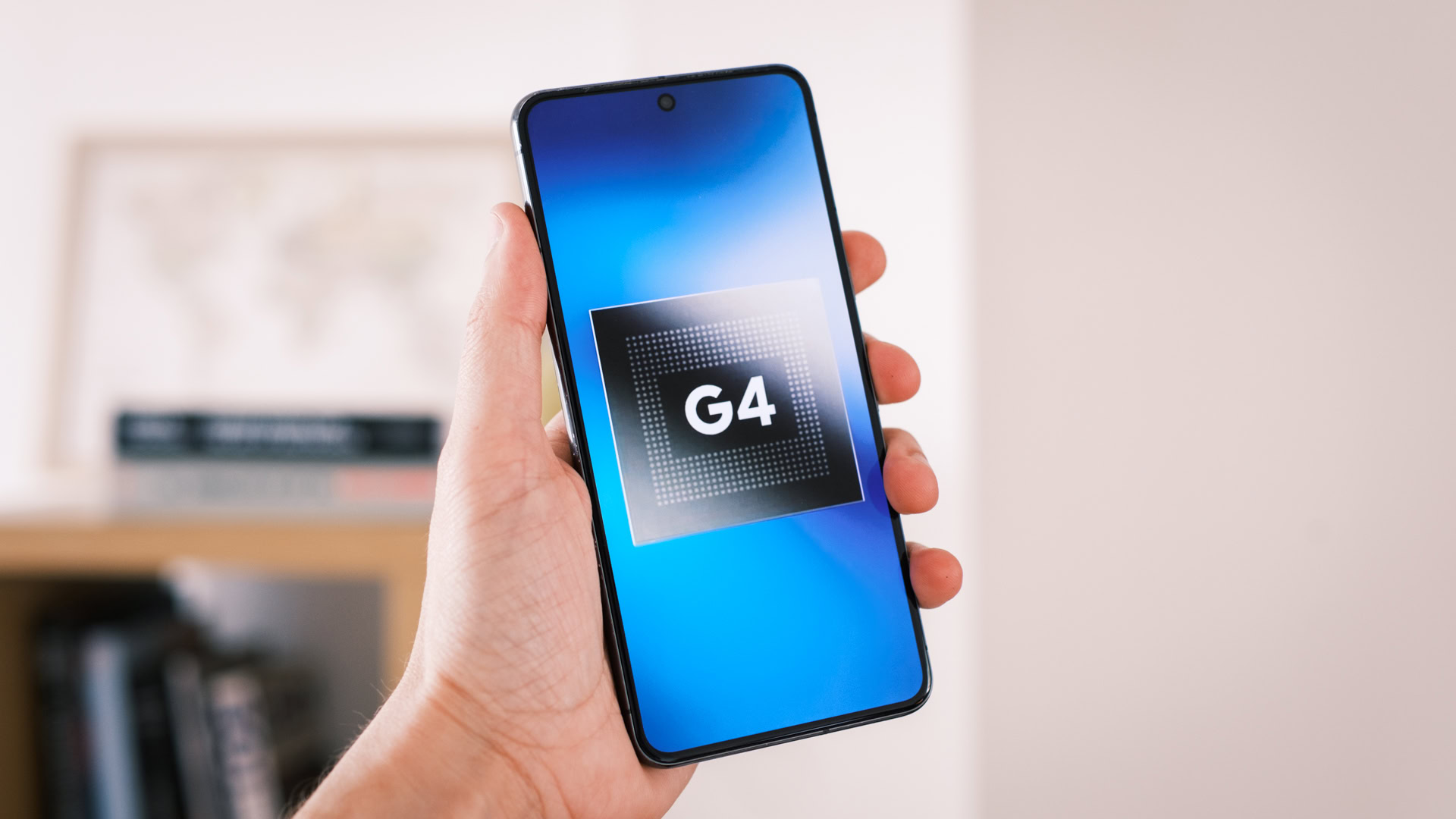Affiliate links on Android Authority may earn us a commission. Learn more.
Google Pixel 9 benchmarks are well behind the iPhone and Galaxy, as expected
Published onAugust 21, 2024

Google’s Pixel 9 series boasts a roster of new features to convince you to upgrade, with Gemini AI lighting the way. Powering the entire Pixel 9 range is Google’s semi-custom Tensor G4 processor, which features familiar off-the-shelf Arm components and in-house add-ons from Google for AI and security.
We’ve never been too impressed by Tensor’s classic benchmark performance, which has pegged it closer to mid-range chipsets than the latest flagship silicon from Apple, MediaTek, and Qualcomm. With seemingly few improvements in tow, we’re not expecting this year’s model to change course. Even so, it’s time to see how the Pixel 9 series and the Tensor G4 stack up against its flagship rivals.
Pixel 9 benchmarks vs the best smartphones
When it comes to taking on the biggest names in the business, Apple and Samsung are as big as it gets. We grab the latest entries in the iPhone 15 and Galaxy S24 series, along with other competitors in their respective price brackets, to see how the affordable Pixel 9 and top-of-the-line Pixel 9 Pro XL compare.
Let’s start with CPU metrics via GeekBench 6 and PCMark. As is the case every year, the latest Tensor chip is somewhat off pace. The Pixel 9 is almost 33% slower in GeekBench 6’s single- and multi-core tests than the iPhone 15. It’s 22% slower than the Galaxy S24 in single-core and 36% behind in multi-core. The Pixel 9 is also 43% slower than the Snapdragon 8 Gen 3-powered Galaxy S24 in PCMark. Talk about a major performance differential.
A more powerful A17 Pro chip in Apple’s more expensive handsets, thankfully, doesn’t extend the deficit here. The Pixel 9 Pro XL remains about 33% behind across GeekBench 6 scores. The gap with the Samsung Galaxy S24 Ultra is closer, but the Pro XL is still a long way behind, scoring 14% worse in single-core, 33% worse in multi-core, and 46% behind in PCMark. On the bright side, the Pixel 9 and 9 Pro offer superior single-core performance compared to the conservative OnePlus 12 and ASUS Zenfone 11 Ultra. However, these phones downclock to save battery out of the box. They fire right past the Pixel with their respective performance modes engaged.
This single-core performance deficit is caused by a lower Cortex-X4 clock speed than its Snapdragon rival, at 3.1GHz versus 3.3GHz. On the multi-core side, the Tensor G4 has two fewer Cortex-A720 middle cores, which explains why we see just a drastic difference in multi-threaded workloads. Does this matter? Well yes and no. The Tensor G4’s CPU setup is based on recent CPU cores and is still plenty potent for your day-to-day apps; its rivals are simply excessive here. However, Google’s flagship chip doesn’t have the peak performance potential for the most demanding applications (such as video editing).
Graphics isn’t going to please performance junkies either; last year’s Tensor G3 was already off the pace, and the G4 is not any better. The regular Pixel 9 has a 20% graphics deficit against the iPhone 15 and it’s half as fast as Snapdragon 8 Gen 3 handsets in 3DMark’s WildLife Extreme test. The Pixel 9 Pro fairs a little better; it also delivers just 50% of the peak performance of the Snapdragon 8 Gen 3’s Adreno GPU and is also 39% slower than the iPhone 15 Pro’s six-core GPU. Gamers will be disappointed once again, especially given that there’s still no support for cutting-edge ray tracing either.
Improved sustained GPU performance is the Tensor G4's silver lining.
There’s a silver lining, though: the Arm Mali G715 holds up much better under stress than its rivals. It closes the gap with Apple’s five- and six-core graphics implementations after just a small temperature increase, which bodes well. However, both Pixels end up surrendering frames again after prolonged exposure to heat. The decline is not as steep as the Samsung Galaxy S24 and S24 Ultra, but these handsets don’t fall far enough for the Tensor to catch up completely. Other Snapdragon 8 Gen 3 handsets, like the OnePlus 12 and ASUS Zenfone 11 Ultra shown here, hold up better under stress and remain further ahead of the Pixel 9 series.
Overall, the Tensor G4 inside the Pixel 9 benchmarks well behind the competition. Of course, we’ve come to expect this from Google’s chipsets.
Pixel 9 vs Pixel 8 benchmarks
OK, so the Pixel 9 series doesn’t perform too well against the fastest phones on the market. But is there a performance reason to upgrade over the previous generation? Well, not really.
The move to new CPU components gives the Tensor G4 a lift over the G3 of about 11.5% in GeekBench 6’s single-core test but only 6.1% in multi-core, likely owing to the loss of a middle core. The Tensor G4 is an octa-core setup compared to last year’s nona-core arrangement. This is reflected in an average lift of just 7.4% in PCMark between the Pixel 8 and Pixel 9 series, which is reflective of typical workloads. Ultimately, you’re unlikely to feel much of a difference moving to the newer model, but the more powerful Cortex-X4 core will keep single CPU-bound tasks, like opening a new app, feeling responsive.
It’s a similar situation in the graphics department. With the same Arm Mali-G715 GPU as last year, performance is pretty much in the same ballpark. We clocked an average gain of just 4.5% for the Pixel 9 and 8% for the Pro XL across 3DMark’s WildLife and WildLife Extreme tests. This suggests an identical seven-core count to the last generation with a minor clock speed boost in the region of the reported 6%.
Again, there is nothing to write home about here; the new chip might add a couple of frames to your games at best. There is some good news, though, both the Pixel 9 and 9 Pro XL offer improved sustained graphics performance compared to their predecessors. So, while frames might not be much higher, they will remain a bit more consistent as heat builds up in longer gaming sessions. While Google hasn’t specified the manufacturing process, this is likely a benefit of moving to an improved 4nm node from Samsung.
What’s up with the Tensor G4?

The root of these lackluster performance gains can be found in the Tensor G4’s spec sheet. Despite the newer CPU parts, it’s running at lower clock speeds than its rivals, dropped a middle core from its previous design, and still sports a virtually unchanged GPU setup. In fact, the chip even has the same AI, security, media codec, and other components as the G3.
Compared to previous generation Tensor chips, this is, by most accounts, the smallest upgrade yet. Not that this makes it a bad processor; the performance metrics here are still more than capable of quickly booting up apps, powering through AI, and even playing the latest mobile games at passable frame rates. The new CPU setup, in particular, will ensure that apps continue to feel responsive. As we know, benchmarks are far from everything; battery efficiency, temperature, and the features the chip powers are important too. Still, when you’re paying iPhone and Galaxy money, you wouldn’t be out of line to expect more comparable peak performance.
| Google Tensor G4 | Google Tensor G3 | Google Tensor G2 | |
|---|---|---|---|
CPU | Google Tensor G4 1x Arm Cortex-X4 (3.1GHz) 3x Arm Cortex-A720 (2.6GHz) 4x Arm Cortex-A520 (1.92GHz) | Google Tensor G3 1x Arm Cortex-X3 (2.91GHz) 4x Arm Cortex-A715 (2.37GHz) 4x Arm Cortex-A510 (1.70GHz) | Google Tensor G2 2x Arm Cortex-X1 (2.85GHz) 2x Arm Cortex-A78 (2.35GHz) 4x Arm Cortex-A55 (1.80GHz) |
GPU | Google Tensor G4 Arm Mali-G715 (MC7?) (940MHz) | Google Tensor G3 Arm Mali-G715 MC7 (890MHz) | Google Tensor G2 Arm Mali-G710 MP7 |
RAM | Google Tensor G4 LPDDR5X | Google Tensor G3 LPDDR5X | Google Tensor G2 LPDDR5 |
Machine Learning | Google Tensor G4 Third-gen Tensor Processing Unit | Google Tensor G3 Third-gen Tensor Processing Unit | Google Tensor G2 Next-gen Tensor Processing Unit |
Media Decode | Google Tensor G4 H.264, H.265, VP9, AV1 | Google Tensor G3 H.264, H.265, VP9, AV1 | Google Tensor G2 H.264, H.265, VP9, AV1 |
Modem | Google Tensor G4 Exynos 5400 4G LTE 5G sub-6Ghz and mmWave Wi-Fi 7 Bluetooth 5.X Satellite connectivity | Google Tensor G3 Exynos 5300i 4G LTE 5G sub-6Ghz and mmWave Wi-Fi 7 Bluetooth 5.3 | Google Tensor G2 Exynos 5300b 4G LTE 5G sub-6Ghz and mmWave Wi-Fi 6E Bluetooth 5.2 |
Process | Google Tensor G4 Samsung 4nm (4LPP+ ?) | Google Tensor G3 Samsung 4nm | Google Tensor G2 Samsung 5nm |
Google notes that it’s not building chips to beat benchmarks, but reports indicate that Google initially had more ambitious plans for the Tensor G4 under the “Redondo” codename. But with the deadline missed, we’ve ended up with “Zuma Pro” — a stopgap chipset that was hastily built on the existing Tensor G3 “Zuma” chip. Really, it’s best to think of the Tensor G4 more as a G3 Plus (perhaps Google should have called it the G3 Pro).
Think of the Tensor G4 more as a G3 Plus.
There is reason to be excited then that we might see a much more adventurous Google Tensor G5. Early reports indicate a move to TSMC’s manufacturing process for the G5, which should boost energy efficiency for better battery life or give Google more power to put towards additional performance. I still doubt we’re going to see Google aim for chart-topping performance next generation; it’ll still almost certainly be picking parts from Arm for the core CPU and GPU specs. However, a move away from Samsung towards a more custom design could allow it to do something more drastically different in the media, AI, and connectivity areas that could make the chip more unique and capable.
Until then, we’ll have to make do with the functional but far from performance-leading Tensor G4 inside the Pixel 9 series.

Excellent build quality, refined design
Extensive update policy

Excellent build quality
Flexible, capable cameras
Reliable update commitment

Gorgeous display
Seven years of software updates

8-inch folding display
Seven years of software updates